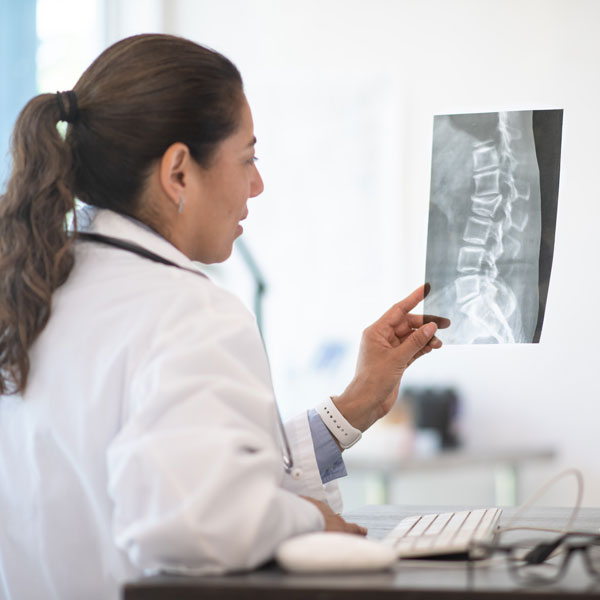Compression Fracture
Colorado Spine Institute Treats Compression Fractures
There can be many causes of back pain, and one of the most common is a compression fracture due to spinal osteoporosis. With more than 200,000 cases reported in the United States each year, spinal doctors around the country are constantly treating this condition. At the Colorado Spine Institute in Johnstown, our doctors and staff know how to test for a compression fracture and what treatments will be best for chronic back pain and other symptoms brought on by the fracture.

What Causes a Compression Fracture?
Compression fractures usually occur because of osteoporosis, or a loss of bone mass, which comes about with age. Something as small as a cough or stretching a bit too far can cause a vertebra to fracture. Others may occur secondary to a fall or because a person tried to lift something heavy, which led to their compression fracture. You may also hear the term “wedge fracture,” because the fracture most often occurs in the front of the vertebra causing the bone to collapse, which leaves the back of the vertebra unchanged. This creates a wedge shape, and in some cases, this is a mechanically stable fracture pattern.
What Are the Symptoms of a Compression Fracture?
Aside from chronic back pain, patients can also experience a loss in height (since the spine is literally compressed) or a hunched posture when standing or sitting. Because of the fracture, they may not be able to stand or sit properly, causing them to stoop or hunch.
A compression fracture can be treated through physical therapy and medication, but in some instances, vertebroplasty is required. Vertebroplasty is a minimally invasive procedure that stabilizes the fracture within the spine.
If you are suffering from chronic back pain and feel a compression fracture is to blame, please make an appointment with us as soon as possible.
